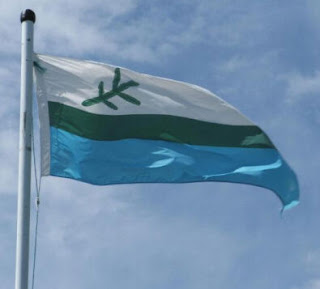The province of Manitoba is locate in the centre of Canada, in the prairie lands. It stretches from the Hudson Bay, all the way down to the US border, and encompasses Lake Winnipeg. Which is also its largest city, and capital.
Originally many First Nation tribes settled the area after the Ice Age retreated, with the first European arriving in 1611 with Henry Hudson, who gave his name to the bay. He was subsequently abandoned there by his crew. In 1612, Sir Thomas Button reached central Manitoba in an attempt to save Hudson.
That voyage led to the formation of the Hudsons Bay Company. The company acted as the de facto government and authority across large swathes of Manitoba through its network of trading posts. Hudsons Bay Company traded with the explorers bringing in needed supplies, and buying furs from the First Tribes. As the fur trade declined, the Hudsons Bay Company took to expanding their import/export side.
The Company, as it was the de facto authority, was granted the right to use the red ensign in 1689. It was defaced with the company initials in white on the lower fly of the flag. The letters consist of the H and B interlocked, with the "C" separate.
Manitoba was originally part of Prince Ruperts Land, and the territory was ceded to Canada in 1869. After the Manitoba Act introduced into the Canadian Parliament, Manitoba was formally a province of Canada in 1870. The original province of Manitoba was much, much smaller than it is today. In 1881, Manitoba expanded, only for large parts of its land to be handed to Ontario after Ontario claimed large chunks of it. Never the less, Manitoba continued to gobble up chunks of land from the Northwest Territories until it attained its current size in 1912.
The flag itself continues the use of the Red Ensign which had been in use in Canada as its national flag. Also, it was a nod to the regions history whilst it was under control of the Hudsons Bay Company which also used a red ensign.
With the adoption of the new Maple Leaf flag for Canada, Manitoba took the decision to introduce a new flag. In 1965 a bill was passed on May 11. Queen Elizabeth gave permission in October, and the new flag was formally adopted in 1966.
The new flag is the Red Ensign with the shield of Manitoba taken from the Coat of arms placed n the lower fly of the flag.
The shield was granted to Manitoba by King Edward in 1905. The shield consists of the St George Cross at the top. Underneath, is a buffalo. A symbol of Manitoba's prairies.
In 1992, a Vice-Regal warrant was granted to augment the shield to include its supporters, crest and motto.
The supporters are a white horse, and unicorn. Featuring red and white beadwork, and a Red River wheel. The compartment consists of examples of Manitoba's diverse landscape. On top is a gold helmet, facing left. The mantling is red and white, the national colours, and the crest is a beaver, the national animal. The beaver is holding a prairie crocus, the national flower. The crest itself is surmounted with a crown, representing Royal sovereignty.










